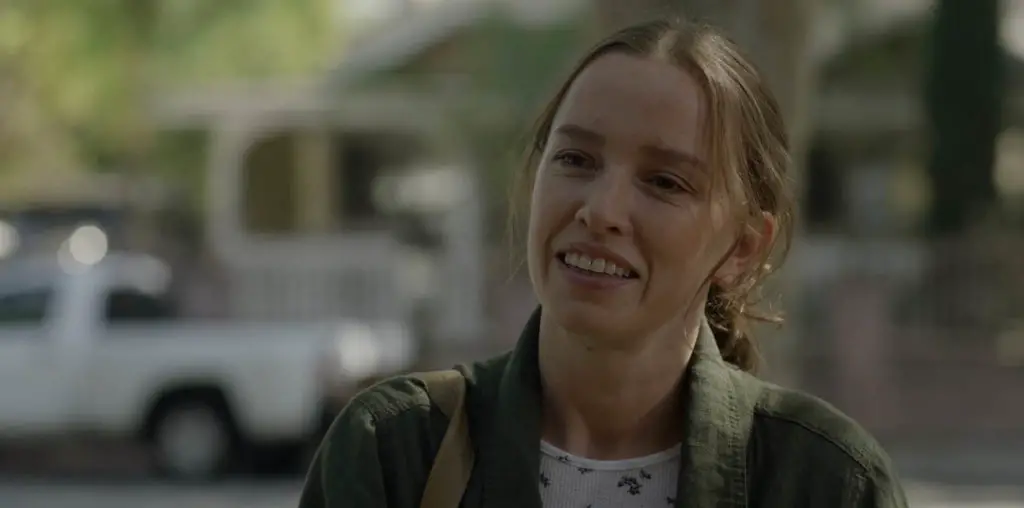
“Year” is an abstract, silent video which can be viewed either with or without special Chromadepth 3D glasses. It is divided into 12 sections, each about a minute and a half, and each one titled with a date from every month of 2003. These dates may have served as indirect sources of inspiration for the sections. Betancourt says that each one is someone’s birthday. In any case, each section has a distinct mood, visual scheme, and a way of addressing issues of color, motion and depth.
Even though I can see normally through both eyes, for some reason, my binocular depth perception is not very acute, and so I barely noticed any difference between viewing the video with and without the 3D glasses. My boyfriend Tom, on the other hand, has excellent vision and tells me that, viewed with the 3D glasses, the illusion of depth in “Year” is striking and intense. He said that in one section of the video, white lines leap off of the screen and appear to dart several yards away to either side. According to Tom, the illusion of depth in the video is related to color. Red elements in the picture jump to the front; blue elements recede into the distance, with yellows and greens falling in between. I don’t know if this scheme is a function of how the glasses work, or if it is something that Betancourt chose for this particular piece, but it follows a traditional concept in color theory.
The sections are quite varied in their moods and compositions. They are generally complex, and are made up of colored squiggles, squares, triangles, lines, diamonds, sometimes overlaid with patterns which could have come from an oscilloscope. The shapes don’t actually “move” in the sense of ordinary animated films, but they constantly vibrate back and forth from one position to another, in rhythms which are sometimes slow and jerky, and sometimes brilliantly electrifying. This creates a constant sensation of motion, and also greatly contributes to the depth illusion.
Some of the most striking sections are actually the most monochromatic. The “May 24” section is all blue, and features a large triangle with the point facing down. It is constantly surrounded by different blue planes, lines, and curves which flicker and change. The depth illusion here is created more by traditional drawing techniques than with the glasses. This is one of the few sections to feature soft, feathery edges to the forms, and it resembles an abstracted version of a beautiful day at the beach.
In a section called “September 11” the space, mostly red with hints of blue, is broken up into rectangles which resemble city buildings. This section creates the most realistic 3D space (said Tom), in which you can almost imagine yourself moving amongst the cubes, even as they continuously flicker and change. Forms which resemble sea creatures float through the “October” section. Both “October” and “December” create a sense of dynamic tension by setting up a gridlike structure of rectangles which leads your eye to read the composition as completely flat, and then filling them with colored forms, which your eye reads as jumping forwards and receding backwards (or at least it did for Tom).
The compositions in “Year” are complex, beautifully balanced, exciting to watch, and have a wonderful sense of musicality and motion to them. The ideas of the work are fully and engagingly brought to life. “Year” is Betancourt’s most ambitious and best work to date.
